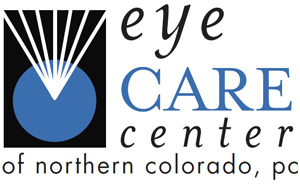Even before Covid, most Americans spent a whole lot of time on phones, computers, and tablets. Now that working from home is here to stay and virtual meetings are the new norm, your screen time probably won’t be decreasing any time soon.
With all the time you spend on devices, it’s more important than ever to take care of your eyes. Looking at screens for hours can cause eye fatigue, discomfort, and other issues. Chances are you can’t avoid screens altogether, so the best way to care for your eyes is with regular eye exams.
It’s recommended that adults get at least 1 eye exam in their 20’s and at least 2 in their 30’s. If you wear contacts or glasses, you’re probably used to seeing your optometrist much more frequently than this — around once a year.
You’re also probably used to taking home a prescription for your doctor for contacts or glasses. But have you ever understood what all those letters and numbers mean? By decoding your eye prescription, you’ll have a better understanding of your vision and how it might change.
Here’s everything you need to know about how to read your eye prescription and how Eye Care Center of Northern Colorado can help you take care of your vision.
Your Eye Prescription Explained
An eye prescription looks very different from a prescription for medication. It has a little chart with letters and spaces for your doctor to fill in numbers with meaningful information about your eyes.
The numbers your doctor fills in tell the makers of your prescription eyeglasses and contacts how strong your lenses need to be and what kind you need. If the prescription is for contacts, it indicates what shape your contact lenses should be.
Your prescription will also tell you if you’re nearsighted or farsighted, and whether or not you have astigmatism.
Astigmatism is a common condition where your cornea is shaped more like a football than a baseball. It contributes to blurriness in your vision, but an astigmatism prescription can correct it.
Here’s your eye prescription explained:
- O.D.: This is an abbreviation for “oculus dexter,” a Latin term which means right eye.
- O.S.: This is an abbreviation for “oculus sinister,” which means left eye.
- SPH stands for spherical: This indicates the lens power you need to see well. If you’ve heard someone say their vision is -3.50 or +2.75, this is the number they are referring to.
- CYL stands for cylindrical: This is lens power needed to correct your astigmatism. If there’s nothing here, it means you don’t have astigmatism.
- Axis: This indicates the amount of astigmatism your eye has with a number between 1 and 180.
- Prism: This is the amount of power needed to account for alignment issues in your vision.
- Base: This relates to position of the prism. It tells lens makers where to position the prism on your lenses. BU stands for base up, BD for base down, BI for base in, BO for base out.
- PD: This stands for pupillary distance, meaning the distance between your pupils. This is important for glasses and prescription sunglasses so the lenses can be positioned in front of your pupils. (It’s not necessary for contact lenses.)
Nearsightedness vs. Farsightedness
One of the most important pieces of information on your eye prescription is whether you are nearsighted or farsighted.
People with nearsightedness, or myopia, can see close objects clearly, but further objects appear blurry. People with farsightedness, or hyperopia, experience the opposite: they can see far objects easily but objects that are closer are blurry.
If you’re nearsighted, the number in the spherical section of your eye prescription chart will have a minus sign. If you’re farsighted, the number in the spherical section will have a plus sign.
Whether you’re nearsighted or farsighted, the bigger the number — the further it is from zero — the stronger the prescription. That means a prescription for -4.25 is stronger than a prescription for -1.00. The eye with the -4.25 prescription has worse vision and needs more correcting.
The same is true for farsighted people with a prescription having a plus sign: a prescription for +5.00 is stronger than a prescription for +1.25.
It’s common for one eye to have worse vision than the other, but typically both eyes are either nearsighted or both are farsighted. (In rare cases, people are nearsighted in one eye and farsighted in the other. This is known as anisometropia.)
Getting Your Eye Prescription Filled
Once your eye doctor has written you an eye prescription, you can order glasses, sunglasses, and contacts through them or through an outside retailer. No matter where you shop, you’ll need an up-to-date prescription signed by your doctor.
At Eye Care Center of Northern Colorado, we have a great selection of prescription eyeglasses, sunglasses, and contact lenses to meet your vision needs. You can try glasses and sunglasses on in person to get a feel for how they look.
This is significantly easier than trying to shop for glasses and sunglasses online — it’s very hard to tell how something will look on your face without trying them on in person.
If you do end up shopping elsewhere and need your glasses or sunglasses fixed or adjusted, we can help.
We also have samples of contact lenses in our office so you can see what feels right for your eyes. Some eyes are sensitive to certain kinds of contact lenses. It can be helpful to try a new brand for a few days before committing to ordering a full set.
Get Regular Eye Exams to Keep Your Eyes Healthy
You might notice your prescription changing through the years. It’s common for your eyes to change rapidly throughout childhood and puberty. Between the ages of 18 and 21, most people’s vision stabilizes, but sometimes lifestyle, injury, and illness can cause vision to change even into adulthood.
That’s why it’s important to come in for regular eye exams so you know you’re wearing the correct prescription for your vision.
Eye Care Center of Northern Colorado treats patients with regular eye exams and screenings. We also specialize in conditions like glaucoma, corneal disorders, and retinal disorders which require keeping a close watch for changes to your eyes.
Next time you’re in for a visit, ask your doctor to talk about your prescription. We’ll walk you through everything you need to know.
Contact the Eye Care Center of Northern Colorado for a comprehensive eye exam today >


